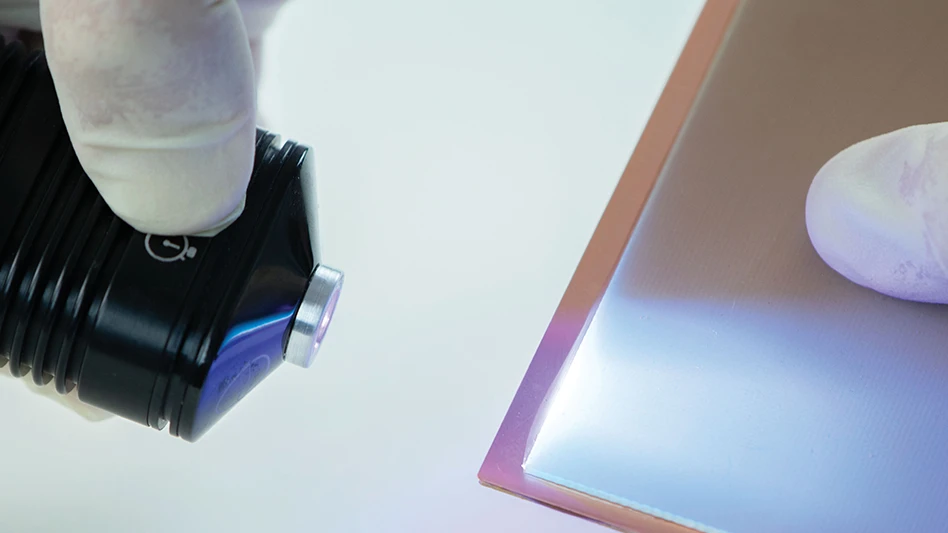
Part 2 of a 2-part series
Part 1 in the August issue of TMD looked at how poor indoor air quality (IAQ) can negatively impact productivity, product quality, and worker health. Part 2 covers IAQ mitigation options and the benefits of implementing a qualified, well-designed system.
Indoor air quality (IAQ) is an important issue for medical device manufacturers, for regulatory reasons and worker health and safety. But it’s not always easy to know which air quality option will provide the most effective particulate control for an application.
There are many options for medical device manufacturers when it comes to dust and fume collection, from ambient air filtration systems to an array of source capture options. The best one for any given manufacturer depends on their combination of processes and facility characteristics.
Mitigation options
Regardless of the processes you are using, IAQ mitigation options fall into a few broad categories. These can be understood as choices in a two-dimensional matrix:
Filtration vs. exhaust – Many manufacturers rely on exhaust and makeup air systems. These systems push dirty air out of the facility and pull clean(er) air in. If particulate volumes are low and heating and cooling costs are not a consideration, this option is cheap and easy. However, if makeup air must be heated or cooled to indoor temperatures, exhaust systems can quickly drain the energy budget. Depending on the type and volume of particulates, they may also put the facility out of environmental compliance. Filtration systems pull dirty air into a dust collector where particulates are filtered out before clean air is returned to the facility. Filtration is usually the better option for facilities with high volumes of particulates and temperature-controlled indoor environments.
Source capture vs. ambient – Source capture systems collect particulates as they are generated, before they escape into the ambient air in the facility. Ambient systems turn over air for the entire facility. For some medical device manufacturing processes that do not produce a large volume of particulates, ambient air quality control may be enough. For processes that produce larger volumes of particulates, source capture will be the cheaper option when it is feasible. The less air you need to move, the lower your equipment and operating costs will be. Ambient systems can also be used along with source capture solutions for secondary air quality control.
Source capture
Source capture, the best option for many medical device manufacturing processes, has many options. The best option depends on the type of process (e.g. dust-producing processes such as cutting and grinding or fume-producing processes such as welding and plastic molding), the volume of particulates, the size of components, and whether or not human exposure is a concern in the process.
Hoods and canopies can be placed over equipment such as robotic welders, injection molding machines, and laser- cutting stations. Dust and fumes are contained within the enclosures, making it easy to capture and collect.
Fume arms use directed airflow to pull in contaminated air from the immediate area. They work best for weld fumes and other thermally-generated fumes that rise in the air. Fume arms have a narrow collection zone, so they should be used for small, stationary components that allow the arm to be positioned close to the source. When used properly, they can be highly effective in pulling fumes away from the worker’s breathing zone and preventing them from escaping into the ambient air.
Backdraft/downdraft tables work well for manual grinding, cutting, or welding of small components. Like fume arms, backdraft intakes are best for rising thermal fumes. Downdraft tables can be used to collect heavier dusts that tend to fall.
Fume guns are an excellent source capture option for many manual welding applications. They add fume extraction right to the tip of the welding torch so fumes are collected at the point where they are generated.
Ambient options

Ambient filtration can be used as a stand-alone system when working with larger components that cannot be hooded, or as part of a hybrid system that also includes source capture. There are three main options to look for in ambient filtration systems.
Ducted push-pull systems rely on a system of ducts up near the ceiling, creating air currents in the building that move air across the area. This continually dilutes the contaminated air with filtered air, reducing the exposure to airborne particulates for personnel.
Ductless systems rely on standalone dust collectors on the factory floor. Each dust collector creates its own circular local airflow pattern, pulling dirty air in and pushing clean air out. These are easier to install since they do not require overhead ductwork, but they do require floor space.
Ductless ceiling mounted systems are a relatively new option. The RoboVent Vista360 and similar systems combine the advantages of a ductless system with the floor space savings of a traditional push-pull system. They may also work better in facilities where overhead cranes are used.

Matching IAQ device to processes

Thermoplastic injection molding – Air quality control for thermoplastic injection molding must consider all parts of the process, from raw material handling to final production of the plastic components.
The first part of the problem is preventing the buildup of combustible dust in the air as the raw pellets or powders are moved, poured, mixed, and processed. In some cases, a high-powered ventilation system can be used to keep the dust at acceptable levels. But when a lot of dust is produced in a particular area, it makes sense to look at a source capture system combined with a dust collector that filters and returns air to the facility (if regulations allow). An intake or hood over the processing point will contain the dust and make it easier to collect. For combustible plastic dusts, make sure the dust collector is in compliance with all National Fire Protection Association (NFPA) regulations and equipped with a deflagration system to reduce the risk of fires and explosions and prevent damage to the facility if an explosion should occur. Employees working inside the enclosed area should also wear personal protection when working directly with the materials.
The molding process itself produces fumes rather than dusts and these mold-process fumes need contained or otherwise separated from the other areas of the facility. If the equipment is too large to be enclosed, local containment may be achieved by partitioning the area from the rest of the facility and maintaining negative air pressure to prevent fumes from escaping. A push-pull system or ductless ambient system can be used to control fumes within the partitioned area.
Machining – Usually involves lubricants which create dangerous oil mists when heated. Specialized collection equipment and filters must be used for oil mists; regular filters quickly become saturated and ineffective when oil mists are mixed with dry particulate. Packed bed filters, also called coalescing filters, are the most effective filters for most oil mists.
Cutting, grinding – Particulates can be controlled with downdraft tables. Laser and plasma cutting produce large volumes of dust that must be controlled to avoid damage to the equipment itself and reduce combustion hazards. Hooded enclosures ducted to high-powered dust collectors are best to keep these dusts under control.
Welding – Fume guns, such as the RoboVent Extractor, can be a choice for parts too cumbersome to put on a bench or table, such as hospital bed frames, gurneys, and other pieces of large medical equipment often welded manually.
Backdraft tables can mitigate fumes for smaller parts that can be easily positioned under a fume arm.
Robotic welding is most often done under a hood to contain weld fumes.
Controlling costs
A well-designed air quality system can help medical device manufacturers meet U.S. Occupational Safety and Health Administration (OSHA) or U.S. Food and Drug Administration (FDA) regulations for IAQ and keep employees happy and healthy. But designing an effective solution requires some expertise. A qualified air quality engineer can help medical device manufacturers find the best solution for their specific applications and challenges.
Maintaining a safe and healthy manufacturing environment shouldn’t have to break the bank. A strategic approach to air quality system design can help medical device manufacturers get the best value for their money and take IAQ off their list of things to worry about.
RoboVent
www.robovent.com

Explore the September 2017 Issue
Check out more from this issue and find your next story to read.
Latest from Today's Medical Developments
- Air Turbine Technology’s Air Turbine Spindles 601 Series
- Copper nanoparticles could reduce infection risk of implanted medical device
- Renishaw's TEMPUS technology, RenAM 500 metal AM system
- #52 - Manufacturing Matters - Fall 2024 Aerospace Industry Outlook with Richard Aboulafia
- Tariffs threaten small business growth, increase costs across industries
- Feed your brain on your lunch break at our upcoming Lunch + Learn!
- Robotics action plan for Europe
- Maximize your First Article Inspection efficiency and accuracy





